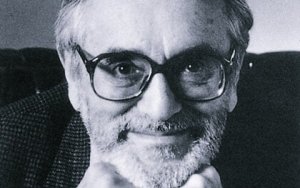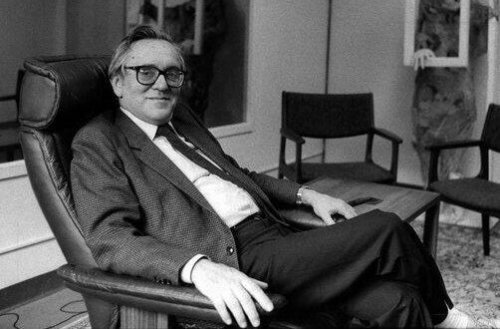Salvador Minuchin and Structural Family Therapy


Written and verified by the psychologist Valeria Sabater
Salvador Minuchin was a psychiatrist and pediatrician. He’s the father of the structural family therapy model. People remember him for his charisma and professional dedication. The contributed a lot through his works, as they allow humans to better understand the dynamics and daily challenges of the family structure.
Many people believe he’s as relevant as other figures, such as Sigmund Freud, B. F Skinner, or Carl Rogers. He was a pioneer as a therapist and an innovator in helping children and their families. Without it, he said, it’s impossible to understand the origin of certain symptoms.
He told the world about the alliances between family members. In addition, he showed how power and submission originate in these scenarios. He was a psychiatrist with an exceptional ability to allow the emotional component to emerge, among other things. According to him, this way, he could better work with the tensions, traumas, damages, and unmet needs.
Salvador Minuchin was like an architect rebuilding family structures. He knew how to observe them and followed his intuition when it came to the dynamics that fed their pathological processes. Later, through highly directive interventions, he facilitated any appropriate changes, always placing children in the most prominent position as valuable interlocutors.
A biography of a family therapist

Salvador Minuchin was born in Argentina in 1921. He studied medicine at the University of Córdoba and graduated in 1948. Later, he spent a few years in Israel working as a doctor for the army. After that experience, he settled in New York and enrolled in psychiatry at a local college.
Once there, he also trained as a psychoanalyst at the William Alanson White Institute. This allowed him to work as a pediatric psychiatrist at the Wiltwyck School for Boys, a correctional facility. In this decisive period, between 1954 and 1962, Minuchin decided to change the classic therapeutic approach.
He developed a type of therapy that included the children’s families. He put the spotlight on such a dynamic system. Thus, it allowed each session to be observed by the rest of the psychiatrists through a room with a one-way mirror. Thus, all therapists could learn from one another and improve their techniques.
Also, he developed the structural family therapy model through these innovative dynamics.
Salvador Minuchin and his collaboration with Jay Haley
After formulating his new theories in the field of family therapy, Minuchin traveled to Palo Alto, California. There, he worked with Jay Haley at the Family Counseling Clinic. This therapist was one of the founders of brief family therapy, and a mentor who helped shape and further mature Minuchin’s innovative approaches.
The book Families of the Slums: Exploration of Their Structure and Treatment (1967) resulted from their collaboration. In it, Minuchin first described his theory of family therapy based on the structural model. Later, his most relevant project would come to the children’s counseling clinic in Philadelphia, which he founded and ran for nearly 10 years.
In 1981, he left his post as director to create the Institute for Family Studies. There, he taught methods to improve parenting and optimize educational processes for both therapists and family members.
Salvador Minuchin died on October 30, 2017, in Boca Raton, Florida.
Salvador Minuchin and his theoretical contributions to family therapy

His work at the Wiltwyck School for Boys was key in developing Minuchin’s theoretical model. For instance, he realized it wasn’t a good idea to focus all of his work exclusively on the young people there. The same who, once rehabilitated and discharged, were likely to repeat an offense and return to the center.
These are Salvador Minuchin’s theoretical contributions to family therapy:
- It wasn’t useful to focus exclusively on a patient without taking their family into account.
- Also, it was possible to better understand the invisible latticework full of signifiers that determines a child’s life by including their everyday context.
- Pathological behavior tends to linger often as an effect of family dynamics.
The purpose of Salvador Minuchin’s therapy
The therapeutic goal of Salvador Minuchin’s structural model was to understand interactions present in a specific family system in order to transform them. For this, it seeks to improve the behaviors and relationships of the members of that family. Also, by taking into account the child/teenager as the protagonist.
The family as a dynamic entity and a sense of identity of a person
One of the postulates that underpin Minuchin’s theoretical model is that the family is a dynamic entity that’s in continuous movement. Therefore:
- The therapist must focus not only on the interaction of that group of people. In addition, they must understand the changes, explore the past, and inquire into those processes that configure the current situation of that particular scenario.
- Furthermore, one is to understand that the family confers a sense of identity on each member.
- Also, games of strength, domination, and submission make each person take a position in said interactions.
- Finally, the desire for separation and individuation is an inherent phenomenon in every teenager.

Diagnosis of family structure
When it comes to diagnosing the family structure of a child or teen, the therapist must pay attention to the following:
- Limits.
- The subsystems.
- The evolutionary cycle of the family.
- Family alliances and coalitions.
- The hierarchy of power.
- The degree of flexibility for change.
- Sources of support and stress.
To conclude, this man also wrote important books such as Family Healing: Strategies for Hope and Understanding, Family Kaleidoscope, and Family Therapy Techniques. His work is highly appreciated by academics, social justice experts, family therapists, and also by anyone interested in improving children’s lives.
Keep in mind that, by serving families, you promote a more dignified, healthy, and happy future for all. Salvador Minuchin was one of the best examples of this.
Salvador Minuchin was a psychiatrist and pediatrician. He’s the father of the structural family therapy model. People remember him for his charisma and professional dedication. The contributed a lot through his works, as they allow humans to better understand the dynamics and daily challenges of the family structure.
Many people believe he’s as relevant as other figures, such as Sigmund Freud, B. F Skinner, or Carl Rogers. He was a pioneer as a therapist and an innovator in helping children and their families. Without it, he said, it’s impossible to understand the origin of certain symptoms.
He told the world about the alliances between family members. In addition, he showed how power and submission originate in these scenarios. He was a psychiatrist with an exceptional ability to allow the emotional component to emerge, among other things. According to him, this way, he could better work with the tensions, traumas, damages, and unmet needs.
Salvador Minuchin was like an architect rebuilding family structures. He knew how to observe them and followed his intuition when it came to the dynamics that fed their pathological processes. Later, through highly directive interventions, he facilitated any appropriate changes, always placing children in the most prominent position as valuable interlocutors.
A biography of a family therapist

Salvador Minuchin was born in Argentina in 1921. He studied medicine at the University of Córdoba and graduated in 1948. Later, he spent a few years in Israel working as a doctor for the army. After that experience, he settled in New York and enrolled in psychiatry at a local college.
Once there, he also trained as a psychoanalyst at the William Alanson White Institute. This allowed him to work as a pediatric psychiatrist at the Wiltwyck School for Boys, a correctional facility. In this decisive period, between 1954 and 1962, Minuchin decided to change the classic therapeutic approach.
He developed a type of therapy that included the children’s families. He put the spotlight on such a dynamic system. Thus, it allowed each session to be observed by the rest of the psychiatrists through a room with a one-way mirror. Thus, all therapists could learn from one another and improve their techniques.
Also, he developed the structural family therapy model through these innovative dynamics.
Salvador Minuchin and his collaboration with Jay Haley
After formulating his new theories in the field of family therapy, Minuchin traveled to Palo Alto, California. There, he worked with Jay Haley at the Family Counseling Clinic. This therapist was one of the founders of brief family therapy, and a mentor who helped shape and further mature Minuchin’s innovative approaches.
The book Families of the Slums: Exploration of Their Structure and Treatment (1967) resulted from their collaboration. In it, Minuchin first described his theory of family therapy based on the structural model. Later, his most relevant project would come to the children’s counseling clinic in Philadelphia, which he founded and ran for nearly 10 years.
In 1981, he left his post as director to create the Institute for Family Studies. There, he taught methods to improve parenting and optimize educational processes for both therapists and family members.
Salvador Minuchin died on October 30, 2017, in Boca Raton, Florida.
Salvador Minuchin and his theoretical contributions to family therapy

His work at the Wiltwyck School for Boys was key in developing Minuchin’s theoretical model. For instance, he realized it wasn’t a good idea to focus all of his work exclusively on the young people there. The same who, once rehabilitated and discharged, were likely to repeat an offense and return to the center.
These are Salvador Minuchin’s theoretical contributions to family therapy:
- It wasn’t useful to focus exclusively on a patient without taking their family into account.
- Also, it was possible to better understand the invisible latticework full of signifiers that determines a child’s life by including their everyday context.
- Pathological behavior tends to linger often as an effect of family dynamics.
The purpose of Salvador Minuchin’s therapy
The therapeutic goal of Salvador Minuchin’s structural model was to understand interactions present in a specific family system in order to transform them. For this, it seeks to improve the behaviors and relationships of the members of that family. Also, by taking into account the child/teenager as the protagonist.
The family as a dynamic entity and a sense of identity of a person
One of the postulates that underpin Minuchin’s theoretical model is that the family is a dynamic entity that’s in continuous movement. Therefore:
- The therapist must focus not only on the interaction of that group of people. In addition, they must understand the changes, explore the past, and inquire into those processes that configure the current situation of that particular scenario.
- Furthermore, one is to understand that the family confers a sense of identity on each member.
- Also, games of strength, domination, and submission make each person take a position in said interactions.
- Finally, the desire for separation and individuation is an inherent phenomenon in every teenager.

Diagnosis of family structure
When it comes to diagnosing the family structure of a child or teen, the therapist must pay attention to the following:
- Limits.
- The subsystems.
- The evolutionary cycle of the family.
- Family alliances and coalitions.
- The hierarchy of power.
- The degree of flexibility for change.
- Sources of support and stress.
To conclude, this man also wrote important books such as Family Healing: Strategies for Hope and Understanding, Family Kaleidoscope, and Family Therapy Techniques. His work is highly appreciated by academics, social justice experts, family therapists, and also by anyone interested in improving children’s lives.
Keep in mind that, by serving families, you promote a more dignified, healthy, and happy future for all. Salvador Minuchin was one of the best examples of this.
All cited sources were thoroughly reviewed by our team to ensure their quality, reliability, currency, and validity. The bibliography of this article was considered reliable and of academic or scientific accuracy.
- Minuchin, S. (1977). Familias y terapia familiar. Barcelona: Gedisa.
- Minuchin,S. & Fishman, H. C. (1984a). Técnicas de terapia familiar. Barcelona: Paidós
- Minuchin, S., Lee, W. Y., & Simon, G. M. (1998). El arte de la terapia familiar. Barcelona: Paidós.
This text is provided for informational purposes only and does not replace consultation with a professional. If in doubt, consult your specialist.







